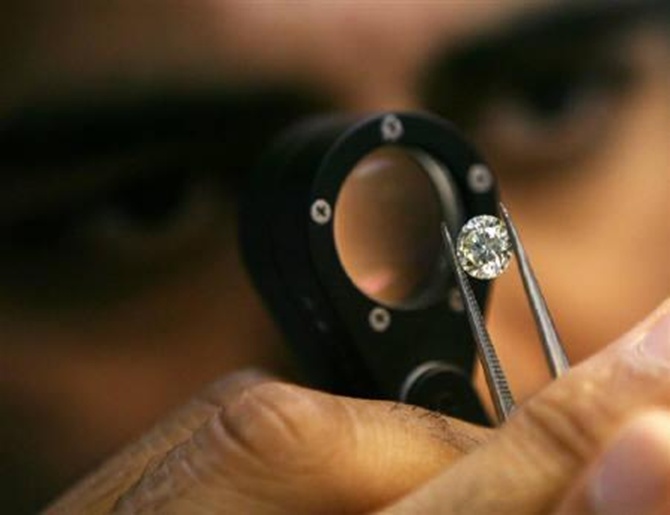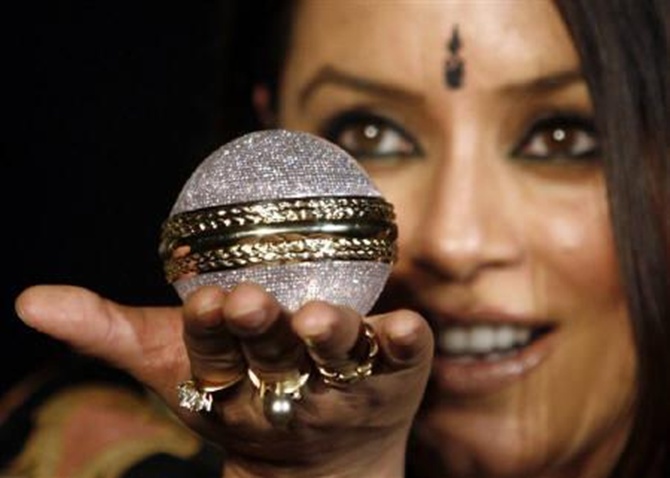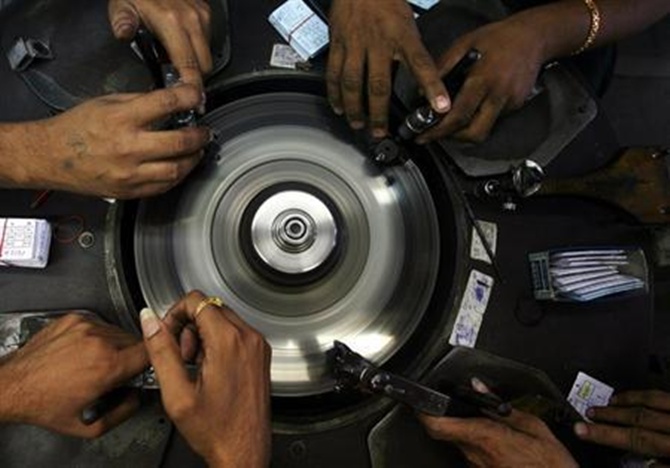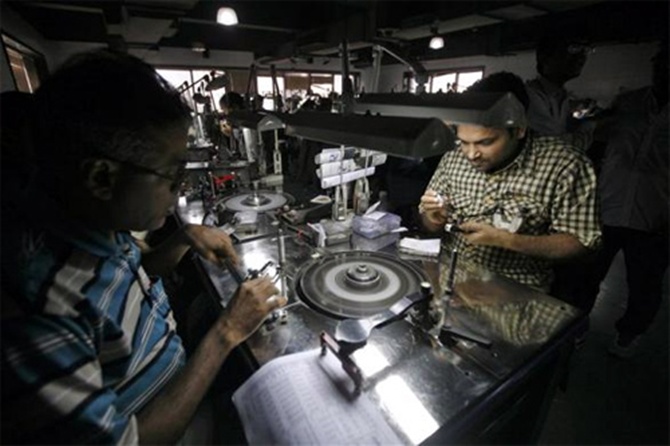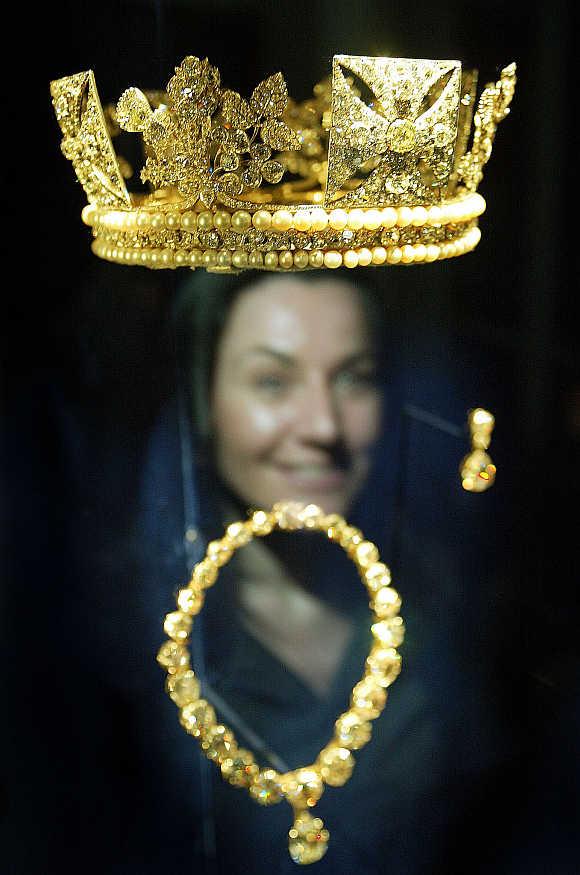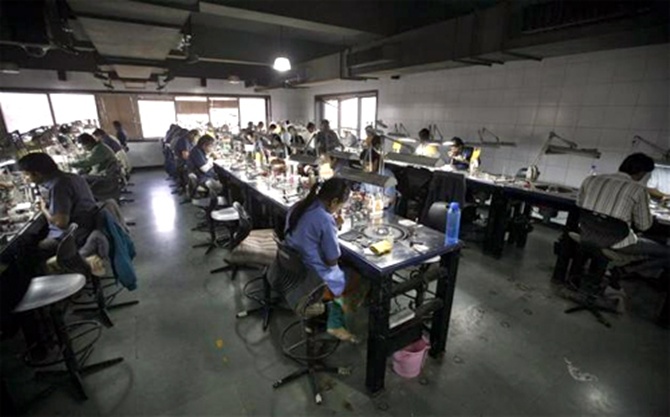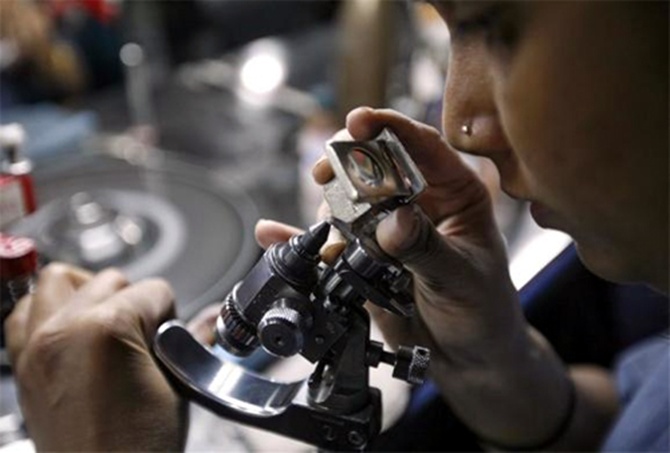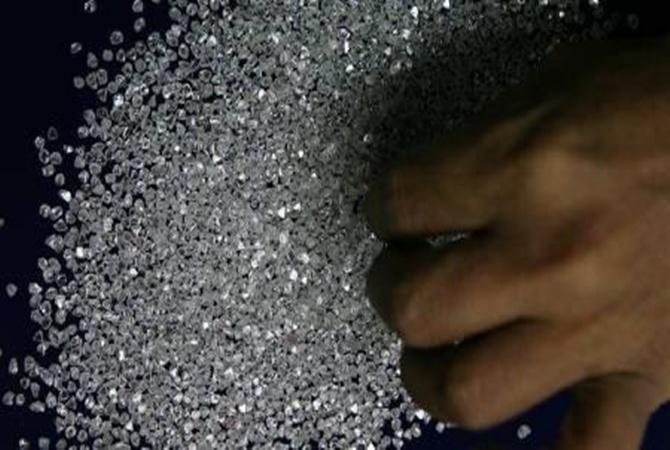 | « Back to article | Print this article |
Why Surat's diamond polishing industry lost its sheen
Did it fail because it was run not like a cooperative with joint decision-making, but as a company whose sole prerogative was profit?
It was meant to be the "White Revolution" of the diamond industry. Just as the famous milk cooperative of Anand in the state had proved what a joint effort could achieve for stakeholders, it was the dream of some of the diamond polishers of Surat in Gujarat to replicate a similar success with a diamond cooperative.
But that idea, the Surat Rough Diamond Sourcing (India) Ltd (SRDSIL), today seems to have run its course without reaching its objectives.
Modelling itself on Amul's legendary success as a milk collection and distribution cooperative, SRDSIL was formed by 35 big and small diamond polishing unit owners and investors of the Gujarat city in August 2010.
Click NEXT to read more…
Why Surat's diamond polishing industry lost its sheen
Its main aim was to ensure that the polishing units in the city did not have to source their rough rocks from diamond trading giants such as DTC, De Beers and Rio Tinto.
If they were able to bring rough diamonds from the mines, their profit margins would improve.
According to industry estimates, of every 10 diamonds sold in the world, as many as seven are polished in Surat, where the industry has an annual turnover in excess of Rs 80,000 crore.
Surat is home to over 2,500 units which generate direct employment for about 400,000 people. Most of these units are small or medium in size.
Click NEXT to read more…
Why Surat's diamond polishing industry lost its sheen
In short supply
A Surat-based diamond polishing unit owner says that the supply of rough diamonds for the past few years has been about 20 per cent less than the demand. Due to this ratio, the big suppliers have raised the prices of rough diamonds, hitting the margins of small and medium units.
To overcome the handicap of limited funds, and hence a weak bargaining chip, many in the industry felt that a consortium of polishing units would provide stronger financial capacity and negotiation power.
SRDSIL was the result. It was meant to secure rough diamonds directly from mines and from authorised mining companies rather than from the big traders. "We hoped the cooperative movement in diamond polishing would help eliminate the big traders from the value chain," says Govindbhai Dholakia, one of the founder-directors of the venture.
Distribution of the rocks purchased to the local traders was to take place through tenders or auctions. Though the company was free to sell rough diamonds to any company, the preferred customers would be registered members in Surat and other parts of India.
Click NEXT to read more…
Why Surat's diamond polishing industry lost its sheen
The concept was ideal, but somewhere down the line, things went from bad to worse. According to industry sources and founding members-cum-investors, several challenges related to policy, and cost and revenue levels led to the downfall of the cooperative.
Two auctions were held before the company slipped into inaction early last year. Sources say that Ashit Mehta, founder-chairman of the cooperative, has since bought the company from the other original investors for an undisclosed amount.
Mehta himself says, "SRDSIL has been bought over by a few of the diamantaires. They are waiting to see how it can again be reborn along the same principles on which it was established."
Click NEXT to read more…
Why Surat's diamond polishing industry lost its sheen
The much vaunted cooperative model has proved almost a non-starter for the diamond polishers.
Experts believe that a cooperative set-up, successful for commodities such as milk and sugar, takes more than just policy and conducive economic environment to survive.
"Take the sugar cooperative story, for instance," says Sebastian Morris, faculty member, Indian Institute of Management, Ahmedabad.
"It was successful in Gujarat due to the proportional holding capacity given to members. If a cooperative sugar mill owner had a certain number of shares, the rights he had were proportional. The larger the number of shares, the bigger the rights of the shareholder. However, the diamond industry opted for a fixed shareholding and smaller unit owners didn't have enough financial muscle to sustain themselves in the global market."
Click NEXT to read more…
Why Surat's diamond polishing industry lost its sheen
Formula gone wrong
Others also attribute the failure of SRDSIL to its being more a company and less a cooperative.
As Jyotindra Mehta, chairman of the Gujarat Urban Cooperative Banks Federation, points out, "In a cooperative culture, all members have to participate in every decision. In contrast, in a company, these powers lie with the management or a clique of powerful people. The latter was the case with SRDSIL." Jyotindra Mehta also explains that for a co-operative model, profit is not the main prerogative. "The diamantaires might have come under one roof in the same manner as a cooperative, but they were focused on making profits," he says.
Yet, when SRDSIL started, it did initially see some good days. At the time of formation, seven big investors put in Rs 5.55 crore each, while 28 smaller investors contributed Rs 50 lakh to Rs 1 crore each in the cooperative.
When they exited, according to Chandrakant Sanghavi, chairman of Sanghavi Exports and a founder-director of SRDSIL, the major investors received nearly Rs 6.50 crore against the Rs 5.55 crore they had invested.
Click NEXT to read more…
Why Surat's diamond polishing industry lost its sheen
However, the company could not make much of this unique initiative. Initially, efforts were made to secure rough diamonds from mines in Zimbabwe and Russia.
A delegation of representatives from the Surat industry visited the two countries to discuss the price, quality and quantity of rough rocks, beside the terms for payment. But insiders say the SRDSIL management was slow in taking several crucial decisions on purchases, even as they struggled with many legal hurdles while buying from Zimbabwe.
But the cooperative did hold some auctions. The first was conducted in July 2011, in which rough diamonds worth Rs 86 crore were sold. A second was held in February 2012, but sales this time dipped to Rs 15 crore (Rs 150 million).
Click NEXT to read more…
Why Surat's diamond polishing industry lost its sheen
A month before SRDSIL had conducted an online auction, putting on sale 38 rough diamonds of varying sizes and quality. However, this did not attract much participation because many traders remained unaware of the e-auction.
Besides sourcing and operational problems, there are also allegations about mismanagement by the men in charge of the cooperative.
And while Sanghavi and other founder-directors deny there had been any disputes inside SRDSIL, talk in the Surat diamond industry is that an internal dispute hampered all efforts at coordinated functioning.
Click NEXT to read more…
Why Surat's diamond polishing industry lost its sheen
After a year of not functioning, there is a hint of better things in the future for SRDSIL. Mehta is believed to be planning to restructure the company and invite new investors after the general elections are over.
"The situation seems different now," admits Sanghavi, "and if the rules of the cooperative change to be in consonance with the principles on which SRDSIL was founded, we will consider connecting with the company again."
Many diamond polishers, especially the smaller players, are hoping for this to happen. For, if it does, it will only benefit the industry.
The Unfinished Journey
* Founded In August 2010
* 35 Partners
* Objectives: To Source Diamonds From Approved Mining Companies For Industry In India
* First Auction: Rough Diamonds Worth Rs 86 Crore Were Sold In July 2011
* Second Auction: Rough Diamonds Worth Rs 15 Crore Were Sold In February 2012
Current Status: Non-Functioning. In 2013, Shareholders Handed Over The Company To Ashit Mehta And Withdrew Their Investments

